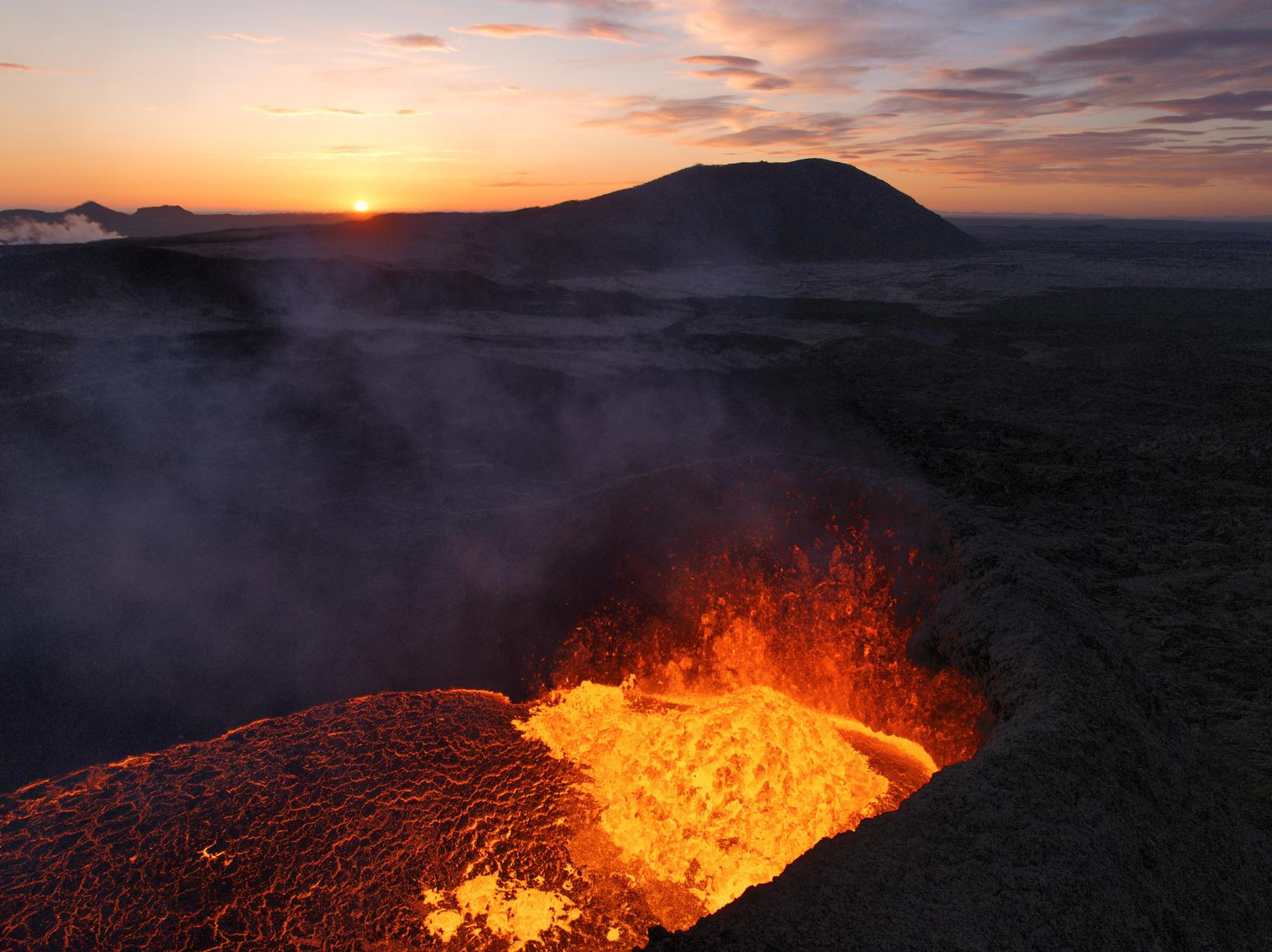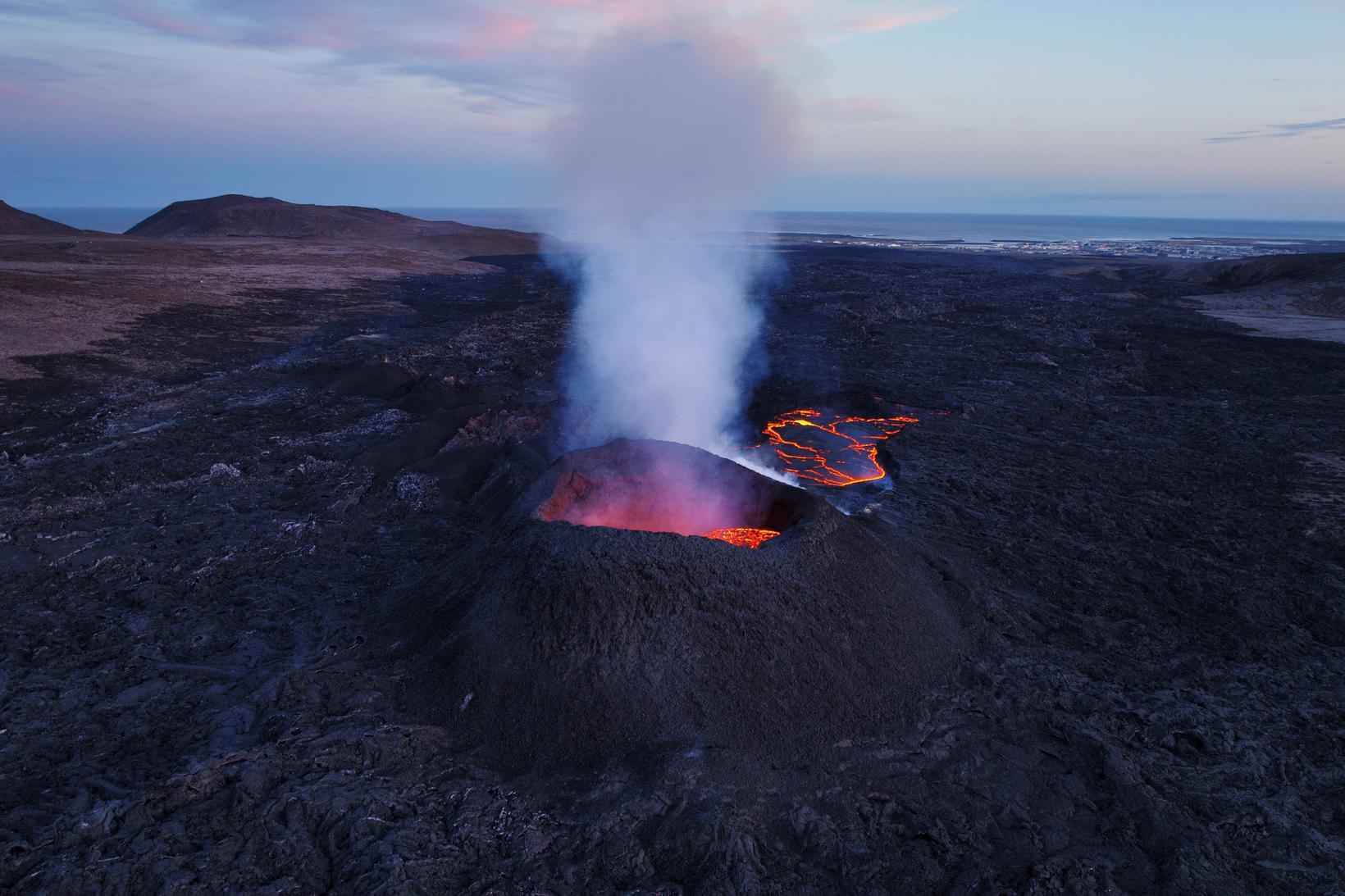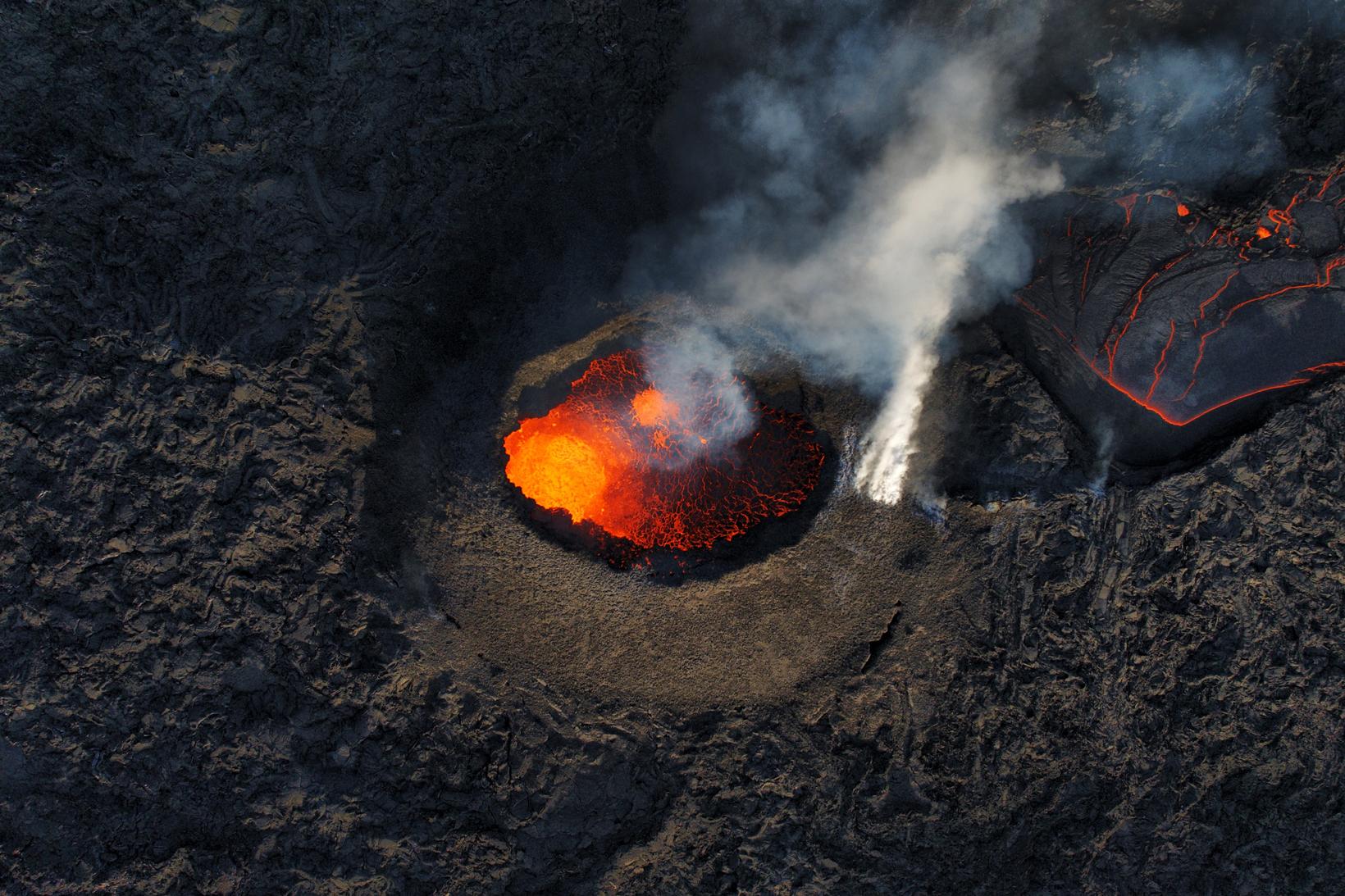Neither seen before in this country nor anywhere else
Land continues to rise at Svartsengi even though there is still an ongoing eruption at the Sundhnúkagígar crater row. There is uncertainty about what happens next.
Páll Einarsson, professor emeritus in geophysics, considers the conditions for two eruptions at the same time to be present since it is the first time that we see inflation at the same time as an ongoing eruption. He says the development indicates that the magma system does not look quite the same as experts have so far thought they knew.
"This is the first time we have seen something like this. There is no experience to build on what this may mean for the future," Einarsson says. He says such behavior at the roots of the earth has never been seen before in Iceland or any other country.
Þorvaldur Þórðarson, professor of volcanology at the University of Iceland, on the other hand, does not think there is much chance of two volcanic eruptions at once, despite the signs that the land continues to rise under the eruption.
In an interview with Morgunblaðið, Þórðarson states that he thinks that it is much more likely that the added magma accumulating causing the inflation in Svartsengi will add to the current eruption.
"We can't rule out the other possibility, but I think it's likely given that magma usually looks for the easiest way to the surface. It usually doesn't try to find complicated ways."
According to Þórðarson, the current situation is a development of the previous magmatic system.
In general, the lower magma flow has accumulated in a shallower reservoir under Svartsengi, which will cause land to rise in the Sundhnúkagígar area. When the upper reservoir reaches its tolerance limit, the roof is lifted and the magma flows up into the eruption. When the chamber is empty, the eruption stops and the chamber begins to fill again.
In the eruption that started on March 16, on the other hand, it seems that the channel from the deeper reservoir has moved past the shallower reservoir and up to the crater.
"Nevertheless, it seems that there was also an opening into the shallower reservoir, so as time went on, part of the magma from this deeper reservoir also began to flow into the shallower reservoir," he says.
"What we have been seeing now is that this shallower reservoir has become full again, and that is why people have been talking about another eruption. But I think it's much more likely, if you just look at it from the “plumbing point of view”, that if you have back pressure in the shallower reservoir, it naturally leads to the channel, and if the magma starts, it will look for the eruption channel that is already active. "













